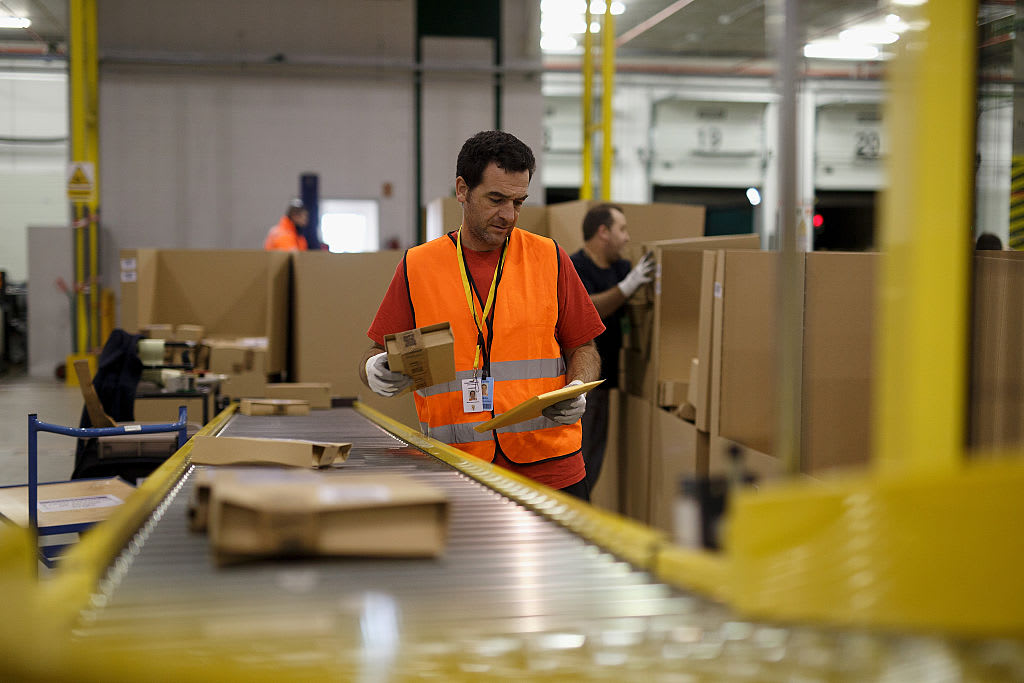BUSINESS NEWS
Amazon toy safety documentation not required immediately
An Amazon warehouseGetty ImagesAmazon says toy sellers have to be safety compliant if they want to sell on its marketplace. But some sellers are not asked to submit safety documents until weeks after they start selling, leaving Amazon’s marketplace open to potentially unsafe products, CNBC has learned.Amazon reached out to a group of new toy sellers in recent weeks, asking them to submit the “required safety documentation” for toys that were already available for sale, according to an email seen by CNBC. Amazon said the submissions had to be made no later than September 9th, 2019 — roughly two weeks after these sellers started selling those products. The sellers who spoke to CNBC said they were not asked to submit the safety documents prior to listing on the site. Several sellers have previously mentioned receiving the same type of email in Amazon’s seller forum.The email highlights a potential loophole in Amazon’s product safety practices, which have come under the spotlight following a recent report by the Wall Street Journal that found over 4,000 unsafe or federally banned products for sale on Amazon’s marketplace, including certain children’s toys with high lead levels. The gap between selling and checking for safety compliance could contribute to a proliferation of unsafe products on Amazon, experts say.”This really speaks to Amazon’s ‘move first and fix later’ mentality,” said Garrett Bluhm, founder of Vendient, a consulting agency for online sellers.Amazon’s third-party marketplace is where independent vendors sell products directly to Amazon customers. Almost 60% of all sales volume on Amazon came from third-party products last year, up from just 30% in 2008. Amazon had over 2.5 million active third-party sellers by the end of last year, adding roughly 3,400 new sellers on average every day, according to Marketplace Pulse.The massive growth of the third-party marketplace has helped Amazon own the U.S. e-commerce market, but it’s also proven hard for Amazon to police effectively, leading to problems such as counterfeits and fake reviews. The WSJ article exposed how Amazon’s marketplace is not doing enough to protect consumers from potential health or safety risks, as thousands of products failed to meet safety compliance or lacked warning labels.Amazon’s spokesperson told CNBC that the company requests safety documentation “very shortly” after a product is listed by a third-party seller. The recent requests for documentation are part of Amazon’s “long-standing Product Safety activities” and are “not a new program or in reaction to the Wall Street Journal article,” the spokesperson said.”All products offered in our stores must comply with applicable laws and regulations, and we regularly contact selling partners to request safety documentation to help ensure the products in our store meet the Consumer Product Safety Commission’s safety standards,” Amazon said in an email statement.Sellers who fail to submit the required safety documentation will be removed immediately, the spokesperson said. Without specifying, the spokesperson also said Amazon asks for compliance documents for some product categories before listing a product. In a blog post published after the WSJ article, Amazon said that it blocked more than 3 billion suspect listings for “various forms of abuse, including non-compliance, before they were published to our store.”‘Move first and fix later’The email is fairly straightforward. “We are contacting you because we show that you may be selling items in the Toys category,” said the email, which was shared with CNBC by two third-party sellers. “As part of our ongoing efforts to provide the best possible customer experience, we are confirming that your product meets the current mandatory safety standard.”It includes an Amazon help page that says Amazon “may request toy safety documentation at any time to confirm compliance,” with links to the safety standards at the nonprofit testing agency ASTM International and the U.S. Consumer Product Safety Commission. It also says sellers should have the proper certificates and test reports that meet safety standards.The policy of asking for documentation for some products only after they’re on sale helps speed up the listing process and quickly expand product selection on Amazon, according to Bluhm. Amazon prioritizes having the largest possible selection of products for sale, which creates a flywheel effect of drawing more customers and sellers on its site. That can lead to lower prices, but often comes at the expense of lax oversight of product compliance, Bluhm said. “Customer obsession is often seen by Amazon as providing the widest variety of products at the lowest possible price, while in some cases customer safety has been treated as an afterthought,” he said.Amazon uses automated tools to identify products that require more vetting, according to Rachel Johnson Greer, a former Amazon compliance manager who now runs her own consultancy, Cascadia Seller Solutions. But given the variety of products that require different types of safety documents, it’s nearly impossible to check every new product for compliance before listing, she said. A better approach, she added, would be to set up a more rigorous seller onboarding process for certain categories, like toys and baby products.”Amazon is not effectively managing the problem,” Greer said.Some regulators are calling on Amazon to be more responsible. Three Senate Democrats, Sen. Richard Blumenthal, Sen. Bob Menendez, and Sen. Ed Markey, wrote a letter to Amazon CEO Jeff Bezos last month, following the WSJ story, demanding the company to take action to stop the sale of unsafe products on Amazon. In July, a federal appeals court ruled that Amazon can be held liable for defective goods sold on its site by third-party sellers, challenging Amazon’s long-held position of denying responsibility for those products.To ensure full safety compliance of every new product listing, Amazon would have to invest a lot more in personnel and technology, Greer said. While Amazon has implemented several new safety protocols over the past year, including asking for certificates in certain subcategories, it’s unclear exactly how Amazon is going to block all forms of bad actors, including those who may forge paperwork, she said.”Amazon was built on customer trust — if they want to retain it, I think they have a clear obligation to do better,” Greer said.Follow @CNBCtech on Twitter for the latest tech industry news.
Source link











